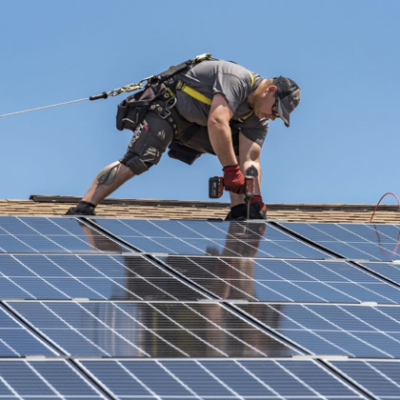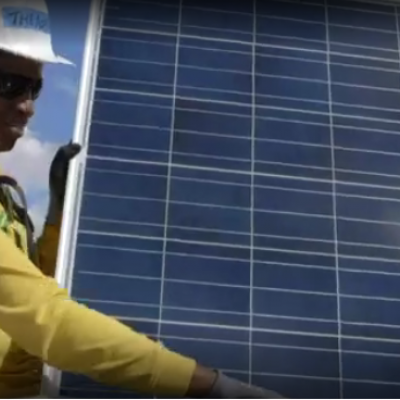Shared Solar: Helping local nonprofit focus funds on mission in Gardner, MA
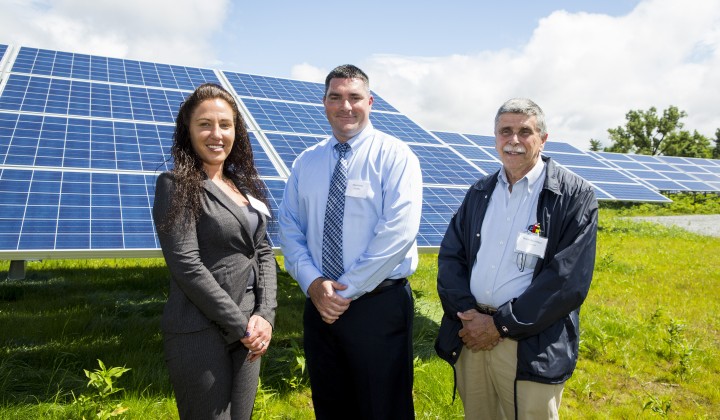
GAAMHA, Inc. is a crucial provider of services for adults with disabilities in the town of Gardner, Massachusetts. As with many nonprofits, GAAMHA’s budget is tight, and every dollar counts. In 2014, their electricity rates were increasing so rapidly the organization feared the costs would overwhelm their ability to deliver services—services the community counts on for individuals in need.
It seemed they had few options and solar wasn’t one of them; like 80% of the buildings in Massachusetts, size, shade, age and other factors conspired to make their roof unsuitable for solar. Then, CEO Tracy Hutchinson had a fortuitous conversation with Gardner’s mayor Mark Hawke.
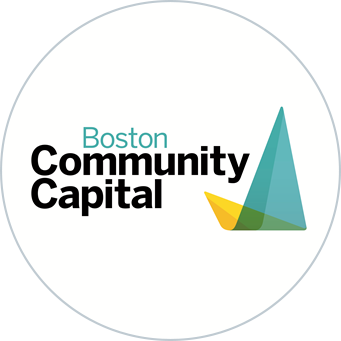 She discovered that the City of Gardner and the Gardner Redevelopment Authority (GRA) were partnering with Boston Community Capital (BCC) on a shared solar array. BCC planned to finance, construct and own the solar system, then sell the net metering credits generated by the project to local organizations at a fixed, discounted rate for 10 years. “When we found out we would be able to save as much as $10,000 annually, we absolutely wanted to be part of the project,” she says.
She discovered that the City of Gardner and the Gardner Redevelopment Authority (GRA) were partnering with Boston Community Capital (BCC) on a shared solar array. BCC planned to finance, construct and own the solar system, then sell the net metering credits generated by the project to local organizations at a fixed, discounted rate for 10 years. “When we found out we would be able to save as much as $10,000 annually, we absolutely wanted to be part of the project,” she says.
The Mill Street Solar Project sits on the former site of a furniture manufacturing plant, long since abandoned and razed. Today, the four-acre remediated brownfield is owned by the GRA—and houses a 3,287-panel, one-megawatt ground-mounted solar array.
Using Massachusetts’ pioneering virtual net metering program, the electricity generated by the Mill Street Solar Project offsets as much as 80% of the electricity consumed at four local Gardner organizations. In addition to GAAMHA, Inc., the organizations include Haywood Wakefield Commons, an assisted living facility; Olde English Village, an affordable housing development owned and operated by Winn Companies; and Aubuchon Hardware, Inc., a family-owned hardware chain that has been a fixture in Gardner since 1908.
The organizations aren’t the only beneficiaries: The project will produce $34,000 in taxes and lease revenue for the City of Gardner and the GRA.
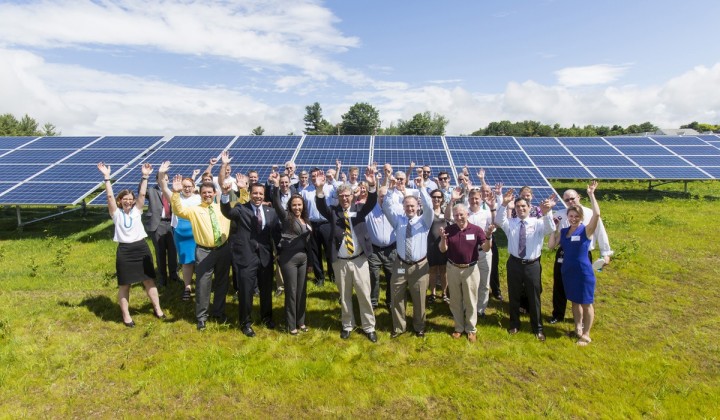
Members of Boston Community Capital, City of Gardner, Gardner Redevelopment Authority and project beneficiaries pose in front of the Mill Street Solar Project at the ribbon cutting event held in May 2014. — Photo: Marilyn Humphries
The Mill Street Solar Project, and the benefits it provides to the Gardner community, would not have been possible without virtual net metering (VNM). VNM allows the net metering credits generated by a solar system in one location to be shared, bought, or sold to different electricity accounts, either at the same location or nearby. It also allows larger, less expensive ground-mounted solar systems to be located on marginal lands, like brownfields and landfills, that have no other economic use. Shared solar projects need virtual net metering to provide organizations like GAAMHA access to solar which they otherwise would not have. In that way, VNM means investments in shared solar projects like the Mill Street Solar Project are able to do much more than generate clean, renewable electricity; they build healthier, more resilient communities by enabling nonprofits to put their monies into their mission, rather than their utilities.
Since the Mill Street Solar Project began operating, the utility company has raised their rates twice, due to increases in the price of natural gas. Yet, thanks to solar, GAAMHA and the other participating organizations are protected from any price increases—this year they have already have saved over 40% on their bills.
Those savings are being put to excellent use. Hutchinson notes, “That $10,000 we expect to save on our energy costs will directly improve the services to the disabled individuals in our Day Services Program, the men battling substance abuse disorders in our residential treatment program and the senior citizens and others utilizing our transportation services. When we can improve these services, our constituents achieve more, work more and contribute more to their local community and economy.”
She adds, “We don’t find this just a cost benefit to GAAMHA, but a benefit to the community of Gardner and to the environment.”
It takes a village to build a shared solar project. In addition to the BCC, the City of Gardner and the Gardner Redevelopment Authority, the Mill Street Solar protect team included Boston Community Loan Fund, Heartwood Group, US Bancorp, Borrego Solar Systems, Inc., A.J. Virgilio Construction Inc., D&D Electrical Contractors, Inc., and Neo Virtus Engineering, Inc.
